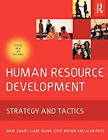|
The Trainers HandbookChapter 5 - Evaluating Your EffectivenessMethods for Long-term Evaluations
1. Mandate posttraining action plans. Sun Life of Canada currently practices one of the best evaluation techniques Ive run across. At the completion of each lesson, trainees are given five minutes to create an action plan for how and when they will use what theyve just learned when they return to the job. Upon completion of the entire course, they are required to spend about thirty minutes consolidating these plans into a final action plan for integrating the course into their daily work. Trainees are paired up to exchange their action plans with their partners for discussion, commitment, and a reality check. Finally, two to three weeks after the training, participants are required to make an appointment with their individual immediate supervisor or manager to go over the action plan to assess which elements of it they have already accomplished and where they may be having problems. This system guarantees transfer of learning, but it requires full management support and training as well as commitment. 2. Set key variables. Plant a method or a word in the midst of your programsome particularly clear example or acronym. Even years later, as you talk to those youve trained, listen for those key terms, techniques, or descriptions. They may have forgotten how they learned them, but youll know. Of course, this technique assumes that youll keep in touch with at least some of those you trained. 3. Take posttraining surveys. Let your trainees know that at some future date they will be asked to respond to a survey. Send out a simple survey no sooner than three to six weeks after training, asking which skills they are using and which have benefited them. Have them describe an instance in which they feel their new skills helped them do a better job. Ask for comments on the validity of the training now that they have had a chance to put it into practice. While they are still in training explain that the future survey is an aid to your performance rather than an evaluation of theirs and that you need their feedback. You should then get a reasonable response when you send out the survey. Do the survey three months to a year after the training, if you can. 4. Hold follow-up sessions. Structure your training in well-spaced intervals. If you get the same group every six months or even once a year, evaluate how well they have used what they were taught last time. Use pretests and posttests as well as assessment sessions, projects, case histories, and role-playing. Ive had particular success with this technique in sales training. Often in unsupervised work such as sales, the trainees enjoy the session but fail to put into practice much of what they are taught. One or two of them do, however, and their sales performance soars. At follow-up sessions, I use those whove succeeded as examples to motivate the others. 5. Perform another (or a continuous) needs analysis. Six months after training, collect data in whatever way you used to establish the need for the training (see Chapter 4). Then compare that data to your earlier results. Dont forget that walking around is one the best and most available tools for gathering data both before and after training. As long as your learning objectives are clear, you will be able to easily gauge how effective your training has been. 6. Monitor company records. If your training impacts directly on measurable data like scrap rates, sales, or customer complaints, track these data over the years and see what the accumulated information reveals. 7. Convert your data to percentages. As the population shrinks, fewer and fewer trainees can respond. Straight data would erroneously imply a decline in training effectiveness. By converting the results to percentages, you can report such facts as 98 percent of those responding to a recent survey felt that training significantly impacted on their workeven though only six or seven former trainees were left to respond. Long-Term Evaluation of Affective Learning
Excerpts from Chapter 5, The Trainer's Handbook
© 1998, 1993, 1987 AMACOM, a division of American Management Association, New York. All rights reserved. Published by AMACOM Books http://www.amacombooks.org Division of American Management Association 1601 Broadway, New York, NY 10019 Customer Service: 1-800-262-9699 More learning articles: |
|
|
|
|
|
|
|
|
|
|
|
| Copyright © 2000-2006 Alan Price and BestBooks.biz contributors. All rights reserved. |


